Buenos Aires - 2004
In April-May 2004 we had our third around-the-world trip. In 54 days we travelled to Auckland, Tahiti, Easter Island,
Santiago, Lima, Arequipa, Colca Canyon, Sillustani, Lake Titicaca, Puno, Cusco, Sacsayhuman, Tambomachay, Machu Picchu, Aguas Calientes,
Sacred Valley, Ollantaytambo, Posada Amazonas, Ica, Nazca, Paracas, Ballestas Islands, Buenos Aires, Iguazu Falls, Itaipu Dam,
Rio de Janeiro, London, St. Petersburg and Singapore.
We had an overnight flight from Lima in Peru to Buenos Aires, the capital of Argentina.

Buenos Aires has many fine European styled buildings.
It is "the Paris of South America".
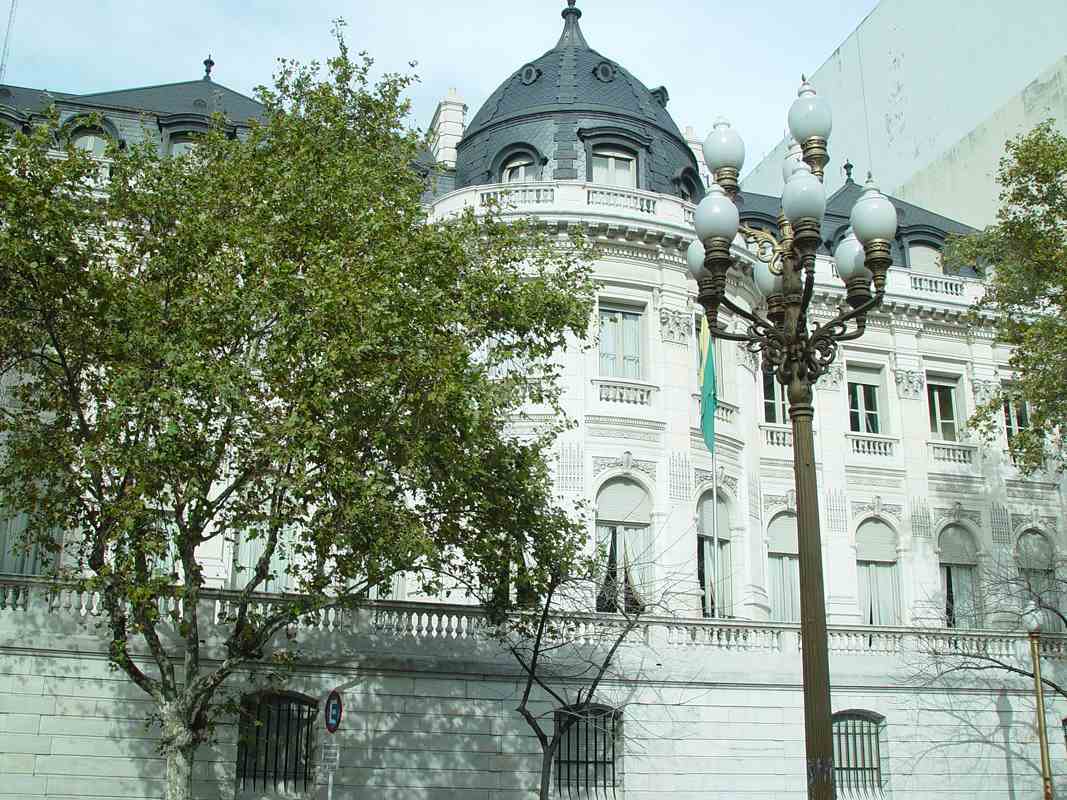

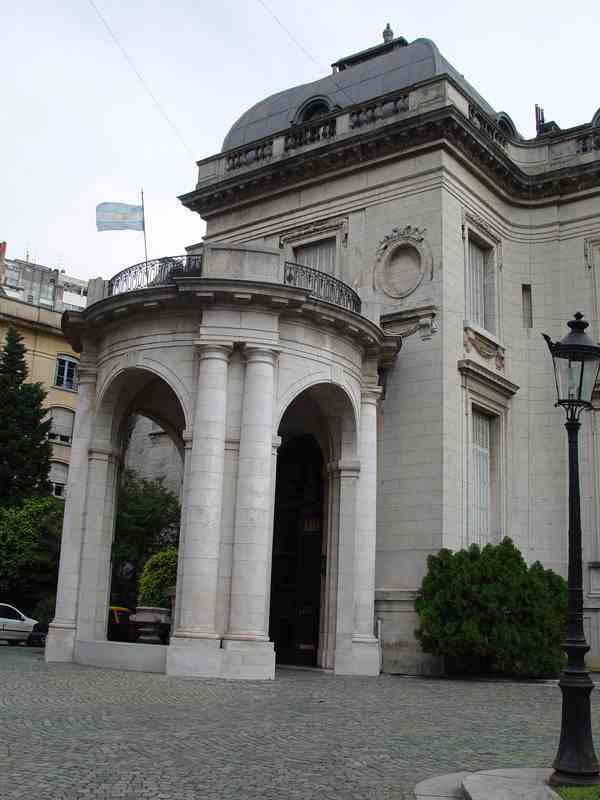
Margaret says that she will live in Buenos Aires for part of the year and supplement her superannuation
by walking dogs for the going rate of $25 per dog per month.

This flower petal scupture closes at night.
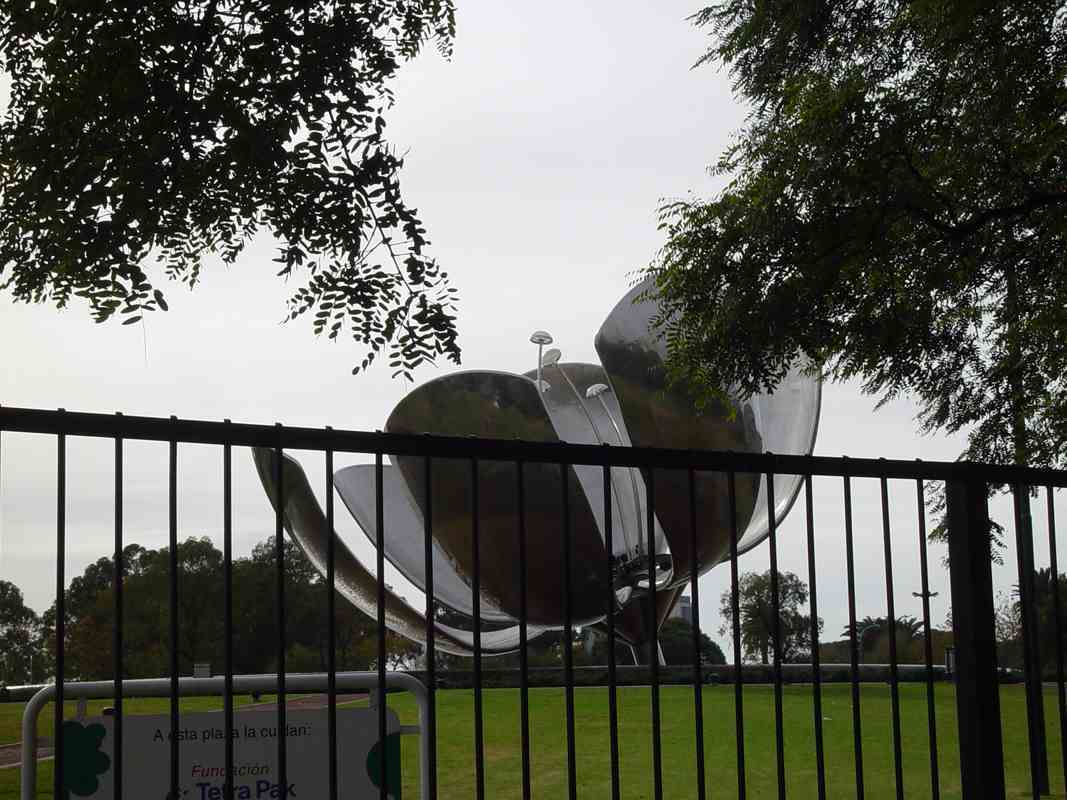
Eva Peron's mausoleum in the Cementiro de Recoleta.
María Eva Duarte (1919 – 1952), better known as María Eva Duarte de Perón, Eva Perón and Evita, was the wife of
Argentine President Juan Perón (1895–1974) and First Lady of Argentina from 1946 until her death in 1952.
She became powerful within the pro-Peronist trade unions, primarily for speaking on behalf of labor rights.
She received great support from the low-income and working-class Argentines who were referred to as descamisados or "shirtless ones".
She suffered much opposition from the nation's military and bourgeoisie, and she died from cancer at the age of 33.
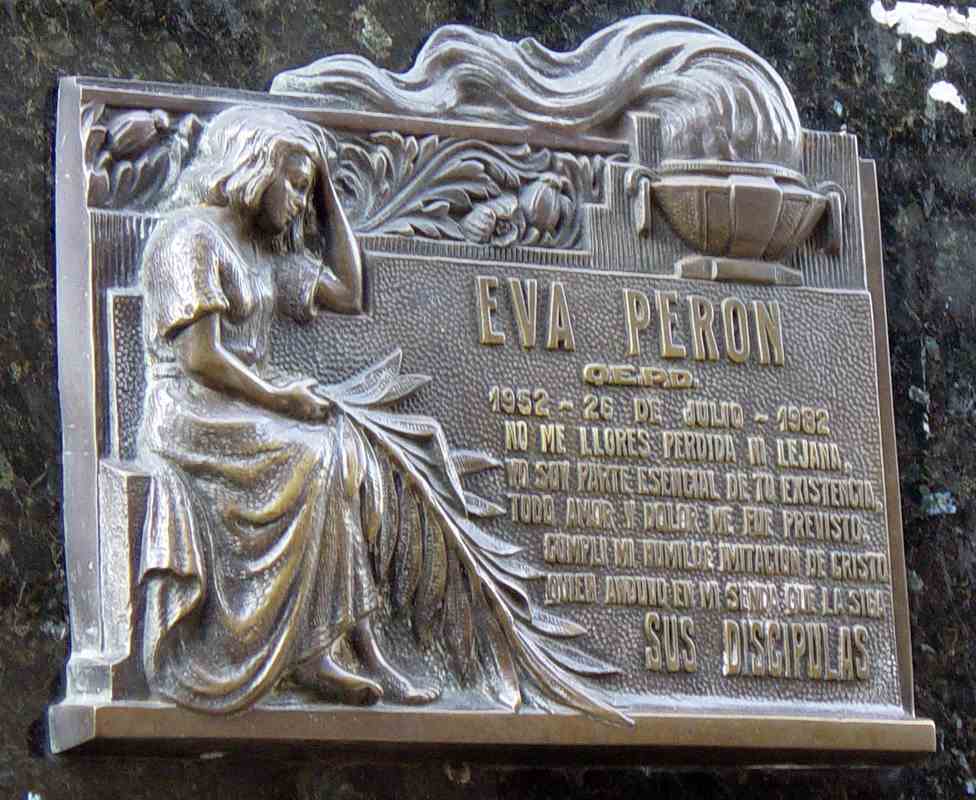

Plaza de Mayo
Behind the obelisk is the pink presidential palace, Casa Rosada

The Casa Rosada balcony from where Eva Peron energized adoring crowds during her heyday in the 1940s.
Madonna also crooned from here for the film, Evita.

On one side of the plaza is the colonnaded Catedral Metropolitana, which was finished in 1827.

La Boca
The old port area of Buenos Aires. Many poor Italian immigrants from Genoa settled here.
Their corrugated iron buildings were covered in paint left over form painting ships.
Boca in Spanish means mouth (of river).
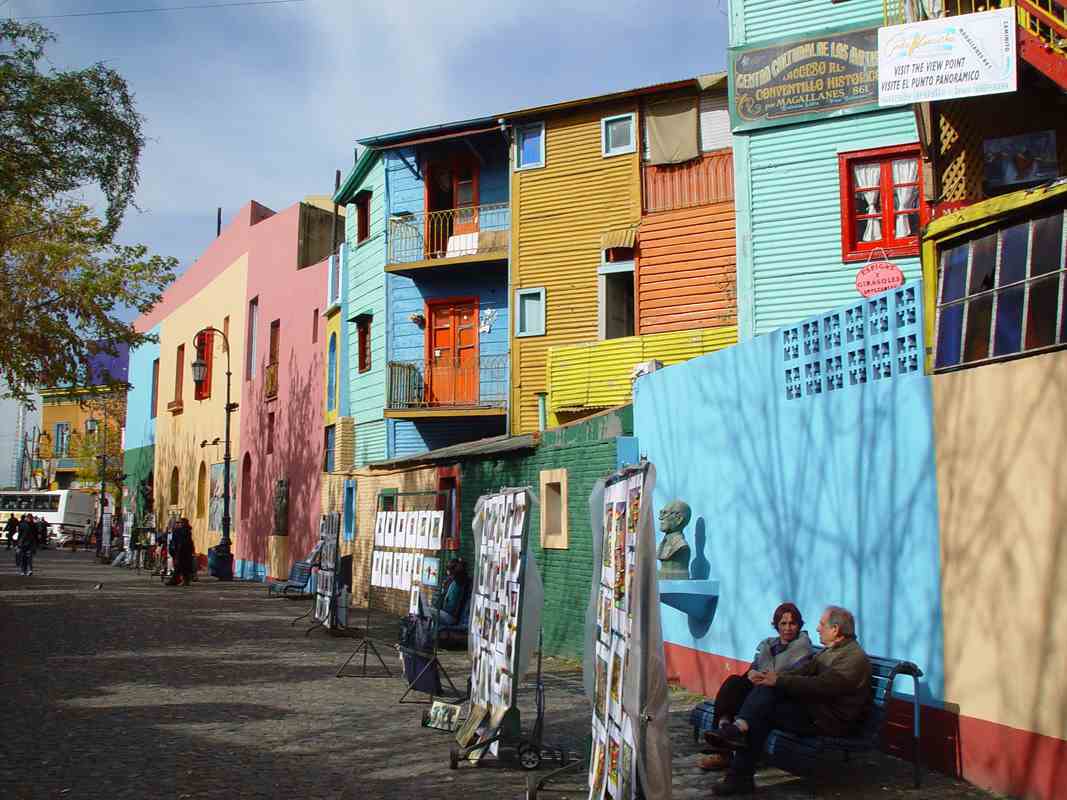
Boca Stadium, the home of Boca Juniors, a famous South American soccer team.
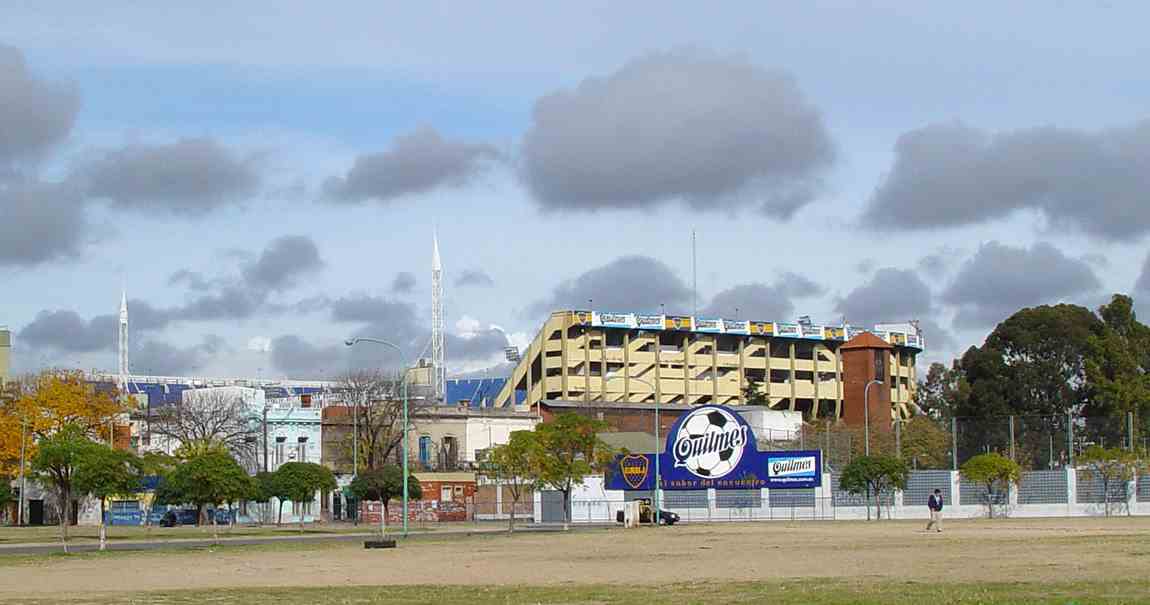
Teatro Colon
Seating 2500 and finished in 1908, it is considered to be one of the top 4 opera houses in the world in regard to its acoustics and infrastructure.
Sol, our guide there, gave us an excellent tour.
We were entertained by an opera singer and given a violin recital.
We saw the workshops - costume making, tailoring, wig making, carpentry, shoe making, scenery and rehearsal rooms.
Many of these facilities are under the Av 9 de Julio.
Aida was the first performance in the new theatre in 1908.

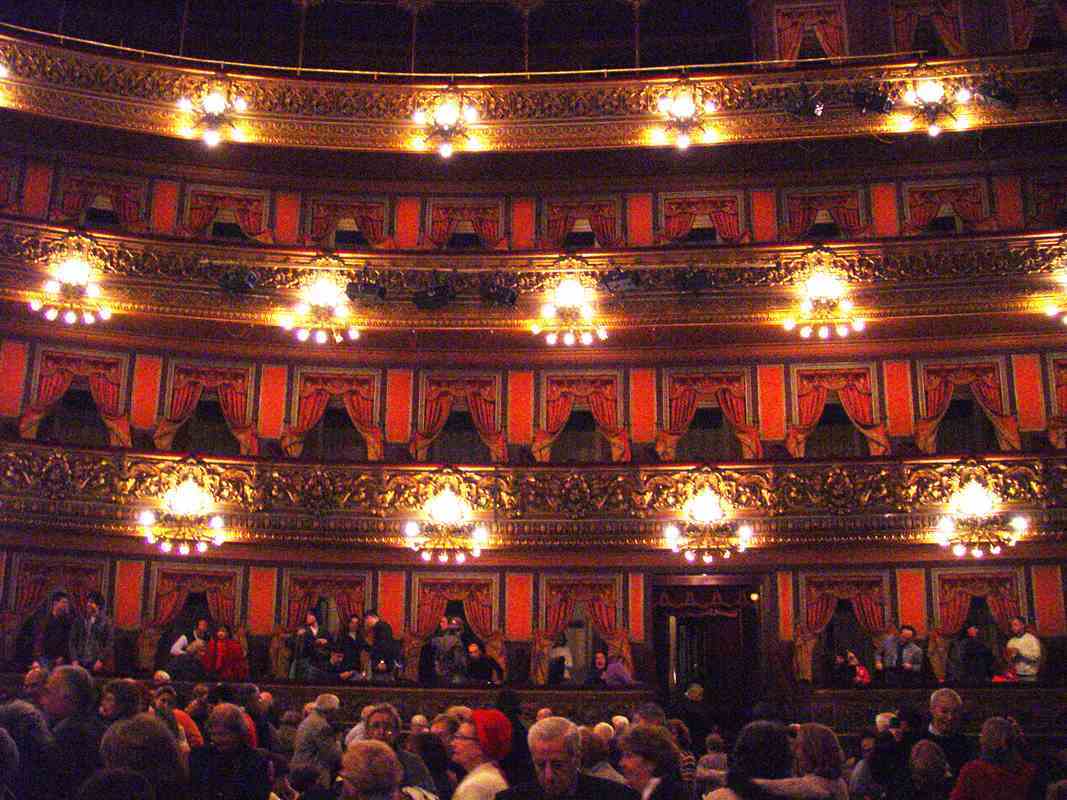
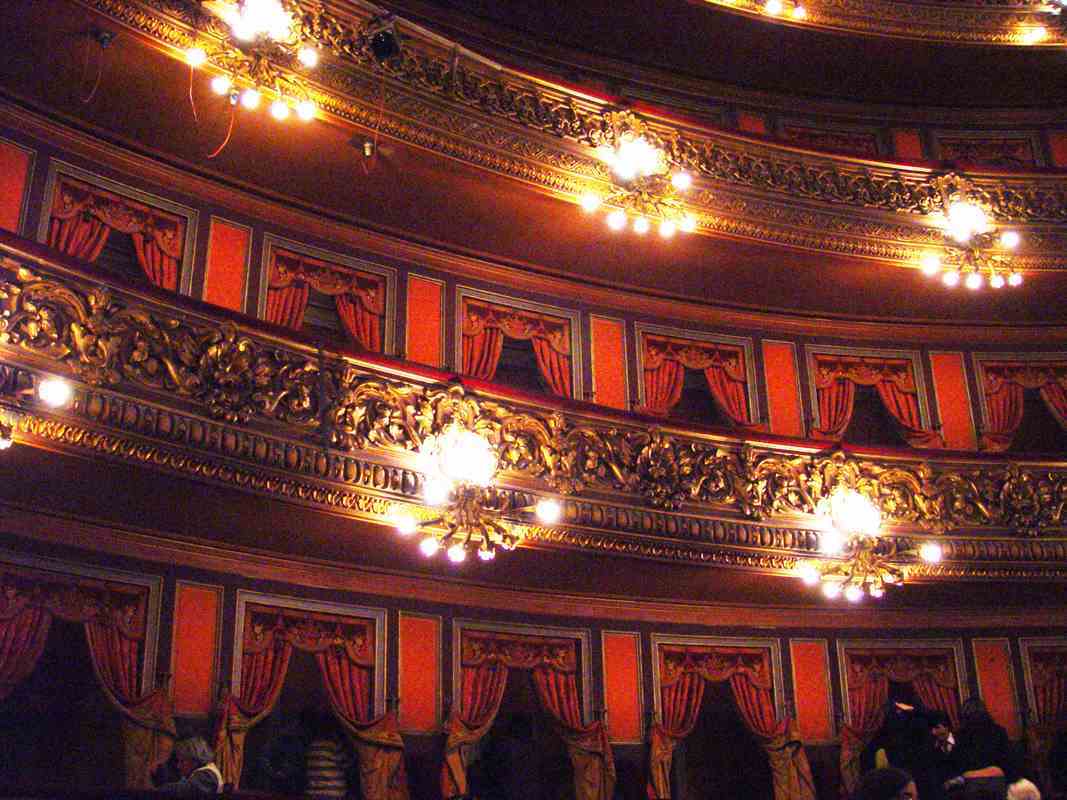
Puerto Madero
This warehouse area has been refurbished with restaurants, offices and even a university.
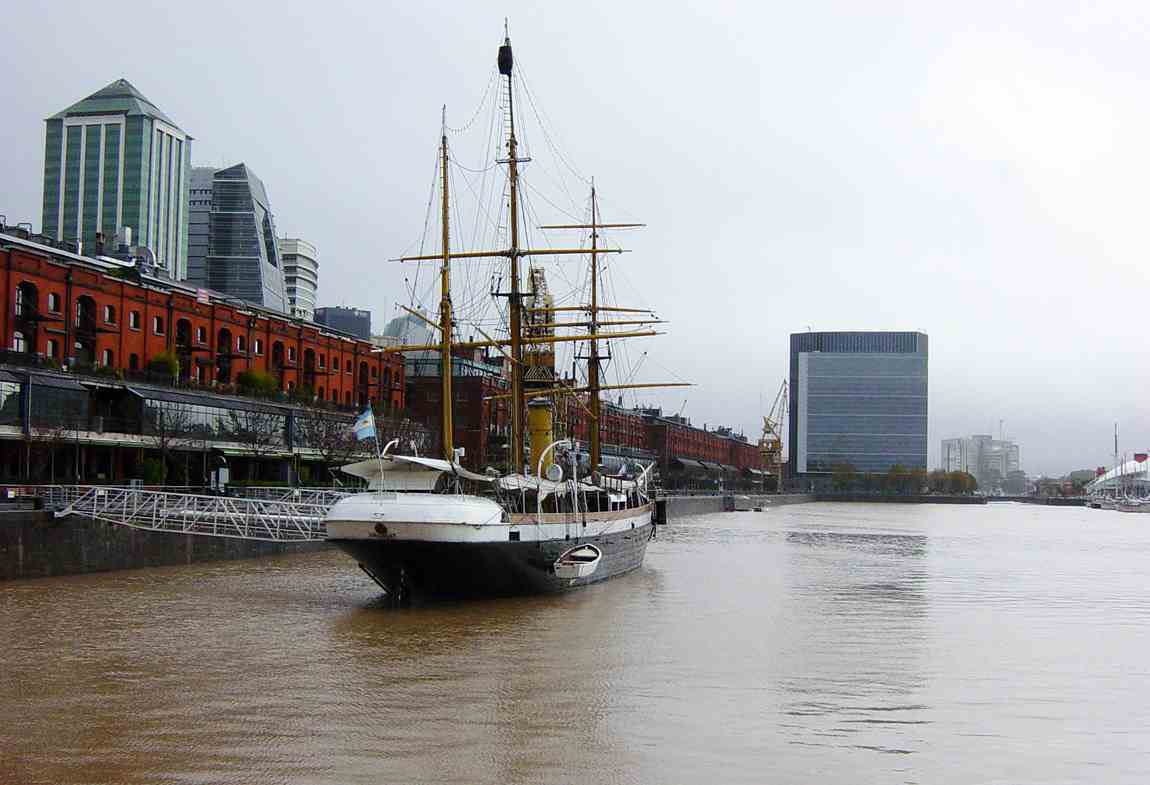
The Women's Bridge
So named because many of the streets in the area have female names.

Buenos Aires Zoo
The animal enclosures were not as good as the Melbourne zoo.

A very fine breakfast at the Dazzler Hotel.
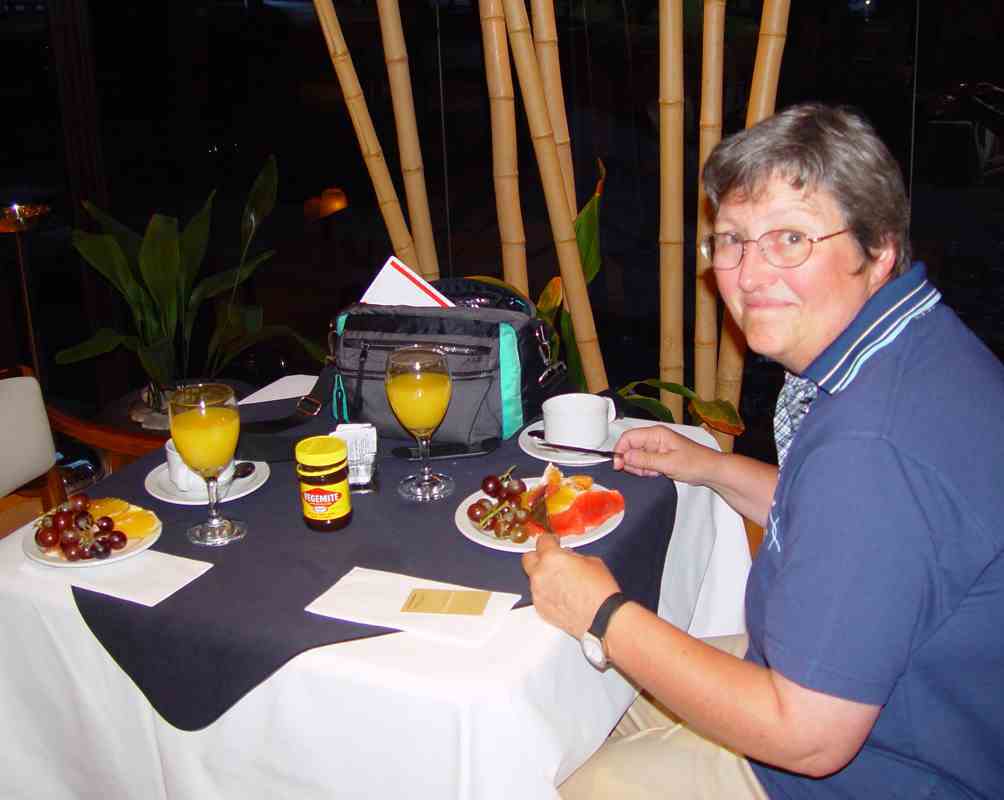
We continued our 56-day around-the-world trip by flying to Iguazú Falls on the Argentina - Brazil border.
In April-May 2004 we had our third around-the-world trip. In 54 days we travelled to Auckland, Tahiti, Easter Island,
Santiago, Lima, Arequipa, Colca Canyon, Sillustani, Lake Titicaca, Puno, Cusco, Sacsayhuman, Tambomachay, Machu Picchu, Aguas Calientes,
Sacred Valley, Ollantaytambo, Posada Amazonas, Ica, Nazca, Paracas, Ballestas Islands, Buenos Aires, Iguazu Falls, Itaipu Dam,
Rio de Janeiro, London, St. Petersburg and Singapore.
We had an overnight flight from Lima in Peru to Buenos Aires, the capital of Argentina.
Avenue 9 de Julio,
the main drag of Buenos Aires.
144 metres wide with 11 lanes of traffic each way, it is claimed to be
the widest avenue in the world.
The 9th
of July is the date of Argentina's independence from Spain in 1816.
There are a large number of car parks built under the avenue.
Buenos Aires has many fine European styled buildings.
It is "the Paris of South America".
Margaret says that she will live in Buenos Aires for part of the year and supplement her superannuation
by walking dogs for the going rate of $25 per dog per month.
This flower petal scupture closes at night.
Eva Peron's mausoleum in the Cementiro de Recoleta.
María Eva Duarte (1919 – 1952), better known as María Eva Duarte de Perón, Eva Perón and Evita, was the wife of
Argentine President Juan Perón (1895–1974) and First Lady of Argentina from 1946 until her death in 1952.
She became powerful within the pro-Peronist trade unions, primarily for speaking on behalf of labor rights.
She received great support from the low-income and working-class Argentines who were referred to as descamisados or "shirtless ones".
She suffered much opposition from the nation's military and bourgeoisie, and she died from cancer at the age of 33.
Plaza de Mayo
Behind the obelisk is the pink presidential palace, Casa Rosada
The Casa Rosada balcony from where Eva Peron energized adoring crowds during her heyday in the 1940s.
Madonna also crooned from here for the film, Evita.
On one side of the plaza is the colonnaded Catedral Metropolitana, which was finished in 1827.
La Boca
The old port area of Buenos Aires. Many poor Italian immigrants from Genoa settled here.
Their corrugated iron buildings were covered in paint left over form painting ships.
Boca in Spanish means mouth (of river).
Boca Stadium, the home of Boca Juniors, a famous South American soccer team.
Teatro Colon
Seating 2500 and finished in 1908, it is considered to be one of the top 4 opera houses in the world in regard to its acoustics and infrastructure.
Sol, our guide there, gave us an excellent tour.
We were entertained by an opera singer and given a violin recital.
We saw the workshops - costume making, tailoring, wig making, carpentry, shoe making, scenery and rehearsal rooms.
Many of these facilities are under the Av 9 de Julio.
Aida was the first performance in the new theatre in 1908.
Puerto Madero
This warehouse area has been refurbished with restaurants, offices and even a university.
The Women's Bridge
So named because many of the streets in the area have female names.
Buenos Aires Zoo
The animal enclosures were not as good as the Melbourne zoo.
A very fine breakfast at the Dazzler Hotel.
We continued our 56-day around-the-world trip by flying to Iguazú Falls on the Argentina - Brazil border.